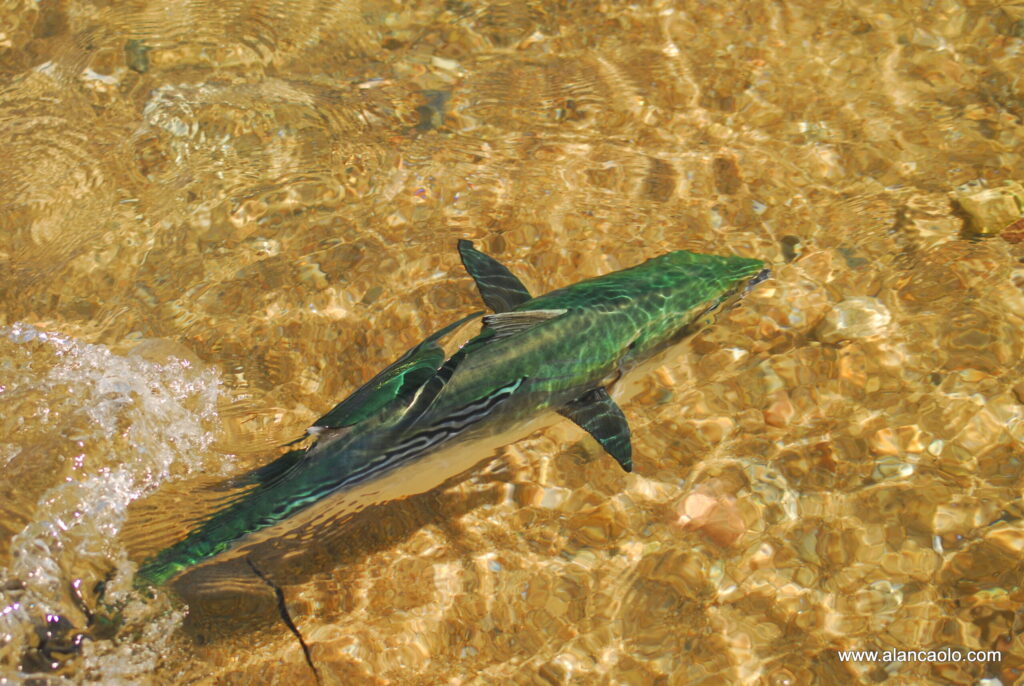
(This article previously appeared in the August/September 2019 issue of Fly Fisherman)
The false albacore run is one of the most annually anticipated events along the Atlantic seaboard from Cape Cod to North Carolina’s Outer Banks. The albie season is somewhat predictable, but their exact arrival varies year to year, as does the duration of the run, which is relatively brief – typically four- to six-weeks-long after they first appear. Compared to other popular game fish, such as striped bass, it’s a flash in the pan that fuels an “albie mania” that disrupts the lives of countless Atlantic coast anglers who become consumed with chasing them. And with good reason – albacore (also known as little tunny) are arguably the most sensational fish one can pursue inshore with fly gear – they’re fast, powerful, sometimes fickle, other times ferocious, often exasperating, and never boring . . . they’re ideal fly rod game fish.
Pursuing tunny by boat is a popular approach and there are savvy, well-equipped guides throughout the albacore’s range who boat hundreds of fish each season for their anglers and double-digit daily landings are common. In contrast, pursuing albacore from shore is a tougher and far more challenging game, but the excitement and rewards are worth it. Near-shore schools (often referred to as “pods”) are smaller than those available to boat anglers, typically holding a dozen or fewer albies. These fast-moving fish surface suddenly, as they blast nearshore bait and then evaporate in mere seconds, providing one-shot opportunities (two, if you’re lucky) to connect with an emerald bullet. This facet alone heightens the shore challenge and gets the adrenaline pumping like no other game in the Northeast.
Consistent success from shore requires an understanding of coastal structures that are favorable for albacore feeding. That knowledge combined with diligent observation and awareness of bait school locations enable anglers to anticipate where and when the fish will appear and facilitate strategic post-up positioning to effectively intercept them.
False Albacore and the Albacore Season
False albacore are pelagic nomads, spending much of their lives dispersed throughout tropical and temperate latitudes of the Atlantic high seas. But each fall they invade inshore waters from Cape Cod to North Carolina’s Outer Banks to gorge on seasonally abundant bait. Northeast hotspots include Martha’s Vineyard, Rhode Island’s Atlantic shores including Block Island, throughout Long Island Sound from Stonington, Connecticut to New York City, the Atlantic-facing shores of Long Island, the Jersey Shore, and the waters surrounding Cape Lookout and Harker’s Island.in North Carolina.
In the Northeast, albacore typically appear in late summer. September’s declining sunlight and dry air produce long, clear nights that chill surface waters with radiant overnight cooling, triggering the migratory itch in both bait and game – false albacore arrive to feast on the bait exiting fertile interior waters. Little tunny arrive from the east, rather than the south, as with spring stripers. Usually first appearing off Martha’s Vineyard and perpetually advancing westward and south to Rhode Island, Long Island, Connecticut, New Jersey, and beyond . . . tunny are nomadic – ever in search of food and never lingering anywhere for long.
The presence or absence of the right bait makes or breaks an albacore season. Albies clearly prefer anchovies, silversides, sand eels, and juvenile bunker over other prey. Mysteriously, all of these bait species may not appear each season, other years there are countless numbers of all of them. But when any of these baitfish are present in good numbers, solid albacore fishing will prevail – it’s that simple. The run advances southward through the end of November with a New England peak in September, top Long Island and Jersey Shore action in October, and November being primetime in North Carolina. Seasons with notable tropical weather activity (depressions, and pass-by storms) have produced exceptional albacore fishing. The influx of warm offshore Gulf Stream surface water that’s pushed landward by passing tropical depressions appears to be the reason. Offshore schools of albacore are perhaps nudged further landward, as well.

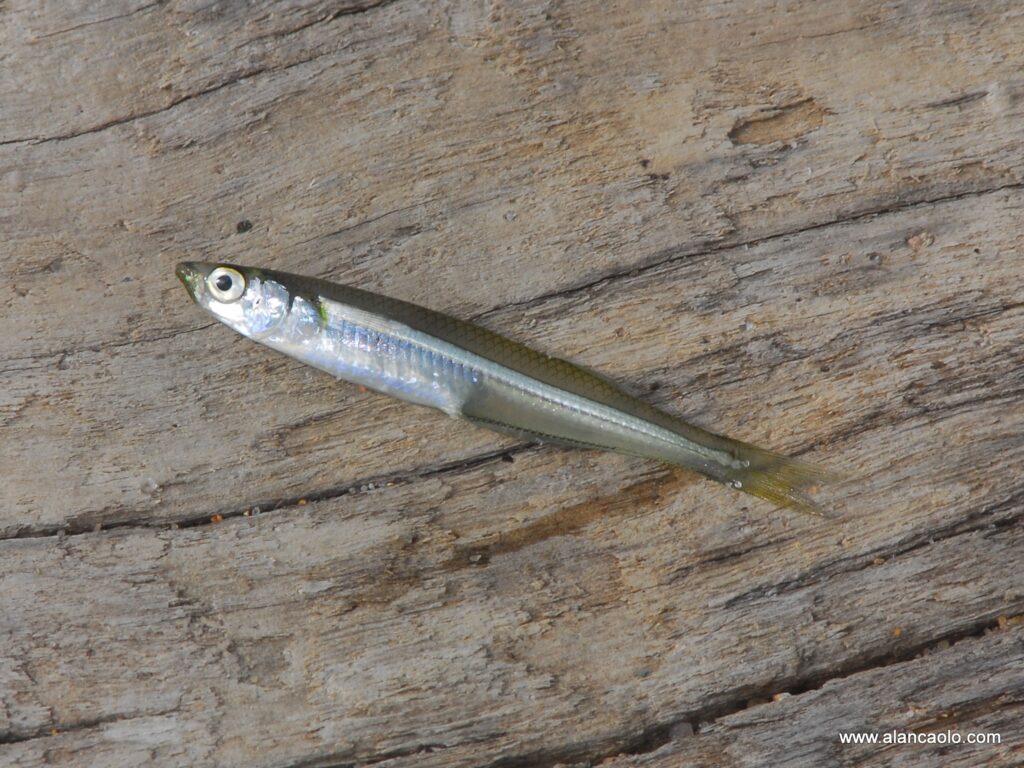
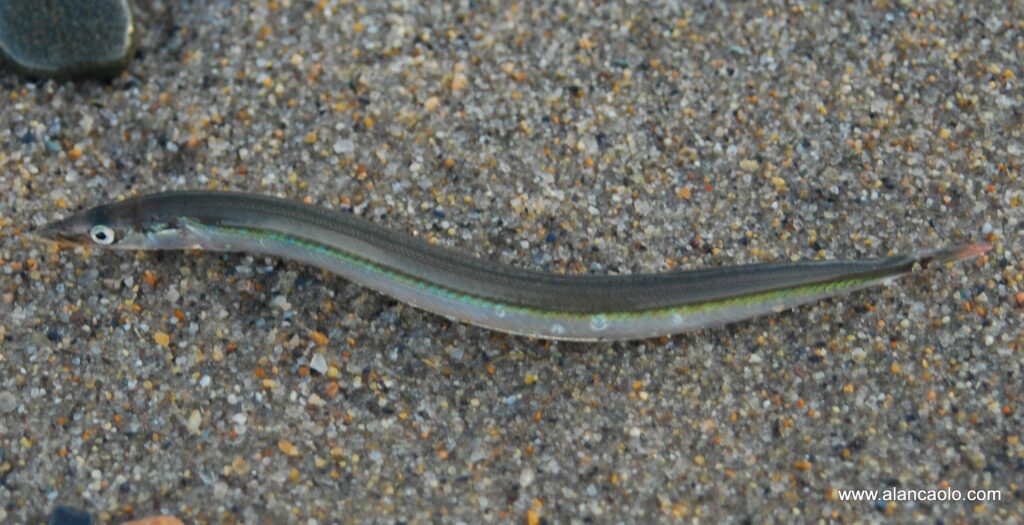
False albacore range from 5 to 15 pounds, with bigger fish encountered now and then (usually mid-Atlantic and southern waters). They are tuna – not bonito – and are the smallest species in the tribe. They are fast and powerful creatures – when hooked from shore, tunny routinely rip the fly line and 150 yards of backing – sometimes more – on their opening run. In contrast to boat-fishing, where they quickly sound into relatively deep water and the struggle becomes vertical and at times monotonous, shore-hooked albies have nowhere to go but away, as they strive to stay with their school or flee to the horizon. This coupled with the raw excitement of making split second presentations to fast-moving schools make the shore game electrifying.
Strategies and Tactics
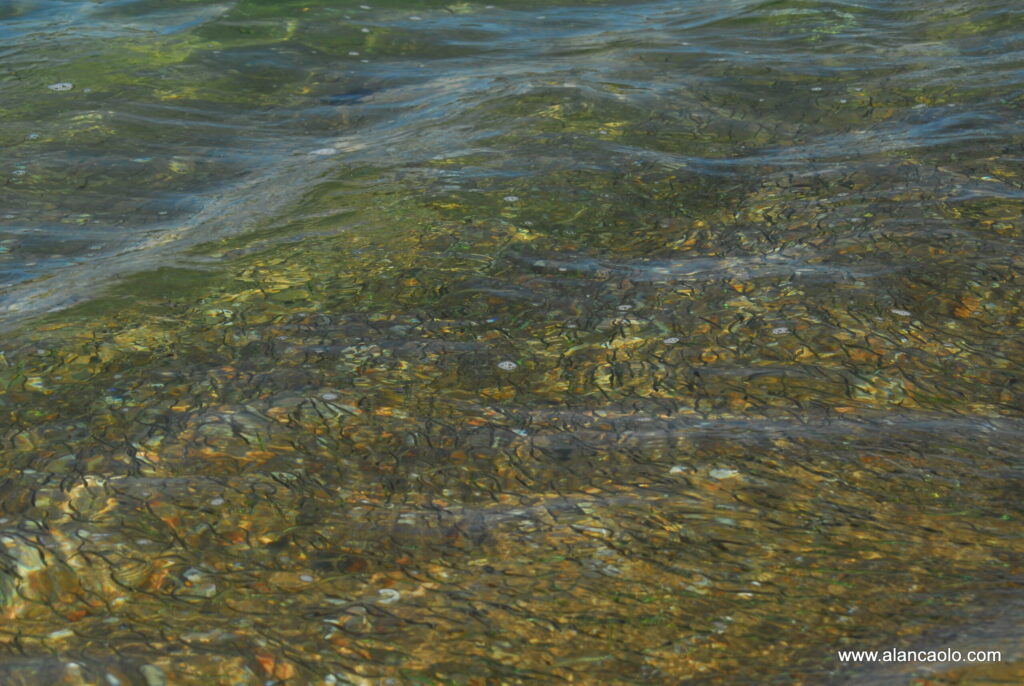
Unlike striped bass that hold in currents, rips or about structure to ambush prey as it comes to them, pods of albacore stay deep and on-the-move, scanning overhead against the bright surface for the silhouette of concentrated prey, which they hit hard, and then move on to the next school. Stripers and blues often “corral” such concentrated bait for relatively long periods of surface feeding. In contrast, a shoreline albie blitz of 10 seconds is luxurious. Consistent success relies on smart post-up positioning, with sensible repositioning as necessary, to capitalize on these momentary feeding sprees.
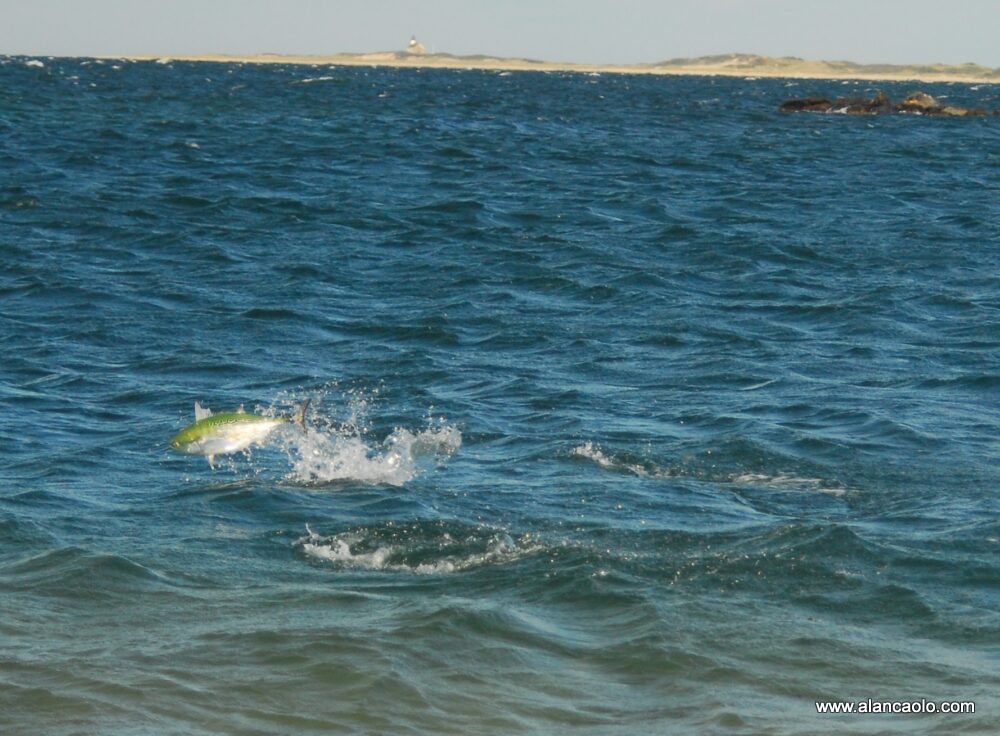
Inlets
Inlets serve as conduit between protected interior waters, such as salt ponds and estuaries, and the open ocean. These waters are nurseries for many forage species spawned in the spring and which reside in these waters until they gradually move seaward in late summer, becoming the powerful magnet that draws little tunny to our inshore waters.
The best action occurs during the incoming tide when departing baitfish must inch their way seaward into the current, which impedes their progress, causing them to condense and become concentrated. This outbound bait naturally seeks a swim lane very near the jetty wall where currents are weakest. This further concentrates it, creating a perfect albie feeding opportunity. A smart approach here would be to locate a thick bait school and patiently post-up nearby till the albacore find it and ravage it.
When the fish are surfacing often, I prefer to take visual shots and hold my cast till they explode nearby before pitching my fly to them. The key to hooking up here is presenting your fly ahead and directly in the path of blitzing fish before bringing it to life with a slow retrieve. This approach keeps your fly in the action for the longest period of time. There’s no need for a ‘core to abandon concentrated bait for a lone fast-moving minnow. They have the ability to approach, eat or refuse food or fly with lightning speed, which confounds newcomers who expect quick strikes from such an aggressive creature. I believe it’s an “odds game” – get your fly in front of the fish as often as you can, for as long as possible and eventually the strike will come . . .
But if you sense that tunny are passing through the vicinity, staying deep and just not surfacing, repetitive blind-casting close to the jetty wall with a sinking line and a slow retrieve can be effective. Many positions along the jetty wall may be viable; however, jetty points are ideal. Albies entering or exiting an inlet often pass very close to the jetty tips, making points perfect blind-casting positions.

Breakwalls
Breakwalls (jetties not associated with inlets) effectively concentrate bait and allow anglers immediate access to relatively deep water making them ideal structures for pursuing false albacore. They’re often productive early in the day, as overnight bait concentrations linger close by, or when prevailing winds nudge surface bait into the wall, concentrating it and creating an attractive feeding opportunity. As with inlets, posting-up near concentrated bait and patiently waiting for albacore to surface nearby is a smart approach. The action can be frenzied, as pods of fish race along the foot of the wall, surfacing only to crash bait schools with no advance warning . . . it’s exhilarating. Again, short, quick casts ahead of, and perpendicular to, advancing ‘core that put your fly right in their path are effective. Blind-casting busy stretches of the breakwall with a sinking line and slow retrieve is an alternate strategy that will also get you connected. Relatively short casts of 40 feet or less present your fly close to the wall where the fish are actively feeding.
Beaches
Little tunny feed off ocean beaches, too. But with no structure or appreciable current to direct bait movement in this environment, the fish become less predictable. You may spot albies zipping through the waves in search of bait, or observe sporadic surface boils during calm surf conditions as they sequentially hit bait schools nestled near the shoreline. But chasing fast-moving albies is futile. Instead, carefully scanning the water with polarized glasses for concentrated bait and patiently staying with that school until the ‘core arrive and hit it is a smart strategy. The corners formed where a beach abuts a beach groin or other natural structure become traps that stall migrating bait, creating ideal post-up locations. Shoreline bait is typically more dispersed than along jetty structures, however, and blitzes become more spread out and often persist longer. I recommend peppering these blitzes with repetitive casting and slow retrieves that only span the action zone. As soon as you sense your fly is no longer in the “zone”, quickly pick up and recast into the action until you hook-up or the fish sound and move on. Expect very long runs from fish hooked from the beach, as they desperately try to stay with their pod.

Tunny are generally not leader shy and 10- to 12-pound-test monofilament or fluorocarbon leaders are fine. I prefer a simple, knotless seven- to nine-foot straight shot of 12-pound-test fluorocarbon. Small albacore flies readily turn these leaders over without a taper. Stripping baskets facilitate line management and are recommended when working jetty walls and in the surf. The raw excitement of albacore fishing can easily lead to line tangles in these difficult environments . . . often at the worst possible time.
Flies and Equipment
Despite their aggressive feeding behavior, tunny are selective eaters and many unique patterns have emerged over the years to replicate the small baitfish they devour. Important common features with most successful albie flies are slim profile, a mix of pearl and silver flash material, and a silhouette appearance that’s opaque in front and translucent in back when viewed from below – silversides, anchovies and sand eels all appear this way. Although they have exceptional vision, albacore spend the majority of their lives in oceanic blue water and likely only perceive color in the blue-green spectrum (the rest appearing as shades of gray). Not surprisingly, blue, green, pink, and white are proven colors, and flies that the fish can see – but not too well – are winners. Synthetics and patterns tied sparsely with natural materials achieve this ghost-like appearance. Epoxy, silicone or resin minnows (Bob Popovics), sparse Deceivers, Mushmouths, and Bunny flies in lengths that match the prevalent bait are effective. Circle hooks offer no advantage when fly fishing and they can lead to missed strikes. Instead, I recommend wide-gap, chemically-sharpened J-hooks, such as Gamakatsu’s SC-15 in sizes 1 and 1/0, and Daiichi 2546 saltwater hooks in sizes 2 and 1 for albacore. They set easily in hard, bony mouths, rarely come loose, and extraction is quick and easy to support a healthy release.
Eight- and nine-weight tackle is perfect, and a seven-weight will handle fish under five pounds. When the action is on the surface, intermediate lines keep the fly high in the water column and they’re easy to pick-up for recasting, two important advantages when sight-casting to surfacing fish. But when the fish are staying deep, fast sinking lines and sink-tips get your fly down five or six feet in the water column and yield more hook-ups. Recently, I’ve explored surface flies and floating lines for the adrenaline rush this approach might provide. Though not as explosive as I had imagined, it’s an exciting and unique experience – the fish rise suddenly and “snatch” the fly off the surface with mercurial quickness, leaving little evidence of a strike. Focused visual tracking of the fly and – oddly – a trout set is in order to seal the hook-up . . . much like Atlantic salmon fishing with a Bomber. A white Gurgler (Jack Gartside), loaded with pearl flash in the tail that’s traced along the surface with a slow, steady two-hand retrieve that creates a distinct V-wake will raise fish from the depths. Fishing the surface is not the most effective method, but it’s an interesting departure for those with a few albies under their belt.
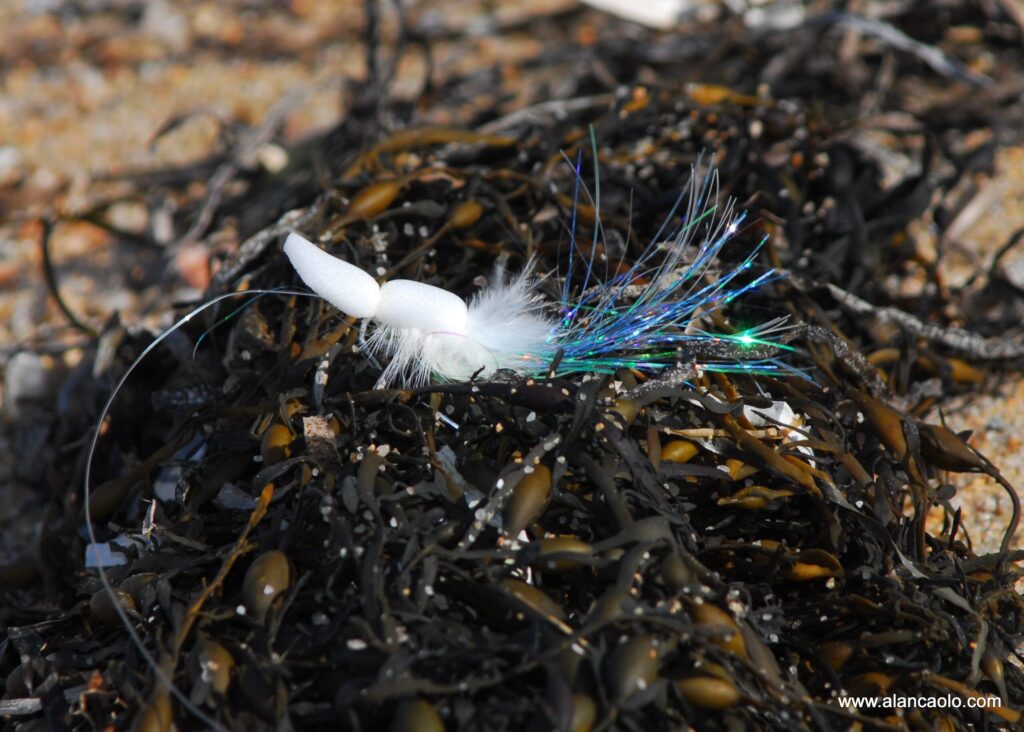
Reels should be sturdy and have smooth drags that withstand repeated powerful runs. A wide arbor preserves the spool’s diameter with long-running albies, which provides two benefits – the large diameter of reserve backing ensures smooth, consistent drag after a long run, and it amplifies retrieval rate when reeling in those long runs. 200 yards of 20-pound Dacron or 30-pound gel-spun braid is adequate.